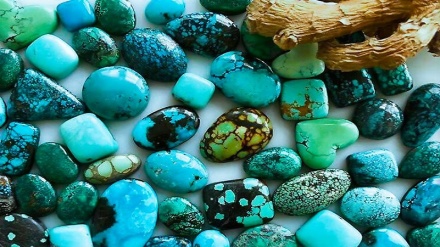Iranian Market (44)
Welcome to this week’s episode of the series, Iranian Market.
As we have said earlier, the Islamic Republic of Iran is one of the richest countries regarding the possession of flora including agricultural plants, medicinal herbs, trees and decorative flowers and plants. Today we’re going to elaborate on Iran’s production of herbs. Stay with us until the end of the program.
Global figures represent a sharp growth in consumption of medicinal herbs as well as trade boom in recent decades.
According to studies of World Health Organization (WHO), at least 25% of credible medicines which are registered in global drug news letters have herbal sources.
Also, in the world’s pharmaceutical industry, more than 120 types of effective herbal substance are used. Besides, more than 250 types of medicines that are introduced as vital by WHO, are of herbal origin. A remarkable number of synthetic medicines are also made by natural substances. Generally speaking, one third of usable medicines are the ones with herbal sources.
Statistics show that 80% of the world population (7 billion plus) take herbal medicines. It seems that people’s liking of herbal medicines as well as the increasing number of herbal products represent a global collective inclination toward using natural compounds and herbal products.
Production and consumption of herbal teas or the use of herbal products in cosmetics like shampoos and creams make evident the economic value of this type of plants.
Market demand alongside medicinal value and the level of processing are the most important indices of economic part of a certain type of herb.
Currently, the production and export of herbal medicines are the lucrative section of agricultural economy.
Based on the WHO’s emphasis on gradual replacement of chemical substances with natural ones, different countries around the world have become inclined toward planning and investing in broad cultivation and production of medicinal herbs at industrial level.
There are over eight thousand plant species in Iran 2000 of which have medicinal effects. The land of Iran is considered as one of the most favorable regions for cultivation and production of medicinal herbs regarding its climactic diversity.
Nearly 1000 hectares of Iran are under the cultivation of 140 different species of medicinal herbs. One of these herbs is cumin. This plant has been used as medicine and spice since ancient times.
The exact origin of this plant is not clear. While some believe it is native to the southern regions of the Mediterranean, another group says this herb originated in Egypt and coasts of the Nile River.
Due to the cultivation of cumin since old times and diversity of wild cumin in Iran, especially the cuminum setifolium species, many experts maintain that the perfection and domestication of this herb has been done in Iran.
Modern studies have confirmed some of the health benefits that cumin is traditionally known for, including digestion improvement and reduction of food-borne infections.
Research has also revealed some new benefits, such as promoting weight loss and improving blood sugar control and cholesterol. The most common traditional use of cumin is for indigestion. Cumin seeds are naturally rich in iron.
Cumin contains lots of plant compounds that are linked with potential health benefits, including terpenes, phenols, flavonoids and alkaloids.
Several of these function as antioxidants, chemicals that reduce damage to your body caused by free radicals.
One of the traditional roles of cumin in seasoning may have been for food safety. Many dressings, including cumin, appear to have antimicrobial properties that may reduce the risk of food-borne infections.
Cumin enjoys a high economic value. This herb is planted and produced according to the special ecological conditions of limited areas in the world.
Iran is one of the biggest producers and exporters of cumin in the world. Iran shares 40% of the cumin global production. The provinces of Khorasan, Kerman, Semnan, and East Azarbaijan are the main regions where this plant grows.
Iranian cumin enjoys a high quality and that’s why it’s about 5-10% more expensive than the cumin produced in other countries.
One of the features of Iranian cumin is that the purity degree of it is very high.
Different countries in Asia and Europe are Iranian cumin’s target market. The Islamic Republic every year exports a certain percentage of its cumin products to Russia, Ukraine, Singapore, the Persian Gulf littoral states, Japan, Germany, Hungary, the Netherlands, Belgium, France and England.
AE/SS


